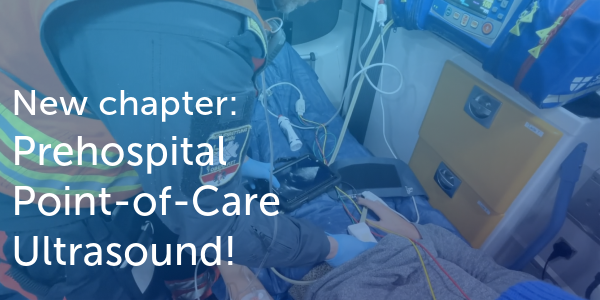Butterfly effect

It has been said that something as small as the flutter of a butterfly's wing can ultimately cause a typhoon halfway around the globe (Chaos Theory). Does this also apply to patient care? Read on and find out.
No wind yet:
Anna is 60 years old. She received a mechanical mitral valve seven years ago because for symptomatic mitral stenosis. She was on oral anticoagulation and her INR was always well in the therapeutic range (recommended target INR of 3.0 (2.5 to 3.5)). Anna led an active life without dyspnea and even went jogging without symptoms.
The butterfly’s wings cause a small draft of air:
Anna was very concerned about her health and scheduled a screening colonoscopy. In preparation a physician paused her oral anticoagulation therapy and put Anna on subcutaneous low molecular weight heparin as bridging therapy.
The life threatening storm:
Only 3 days after she saw her physician, while walking home from a shopping trip Anna suddenly experienced severe shortness of breath and weakness and had to call the EMS service. She was barely stabilized with inhaled oxygen supply and admitted to the hospital immediately. Anna was brought to our emergency department. On admission she was on the edge of instability. Anna was breathing rapidly, sweating and was quite agitated. Her blood pressure was okay, at least something one could build on. Anna could only sit upright in her bed so taking the chest x-ray was a challenge for the technician, this is the image:

Chest X-ray shows signs of pulmonary congestion II-III°. The mitral valve
prosthesis and cerclages at the sternum can also be seen.
Since we knew her medical history we were very concerned about the prosthetic valve and we immediately performed a transthoracic echo study (click on images for video):
Apical four chamber view.
She was very restless during the exam and not easy to image but it was clear that she had pulmonary hypertension. The motion of the interventricular septum was abnormal and the right ventricle dilated. But was there also something wrong with the prosthesis? To find out we need to use color Doppler:
Pretty turbulent inflow. To see how high the velocity across the valve truly is we have to use CW Doppler:

CW Doppler tracing across the mitral valve prosthesis. Maximal velocity is
3.6m/s the mean gradient is 31mmHg and the pressure half-time 360ms.
Most of you already suspect the correct diagnosis. This smells like prosthetic valve obstruction. The gradients are extremely high and explain pulmonary hypertension, pulmonary congestion and her symptoms.
What is prosthetic valve obstruction:
The causes of prosthetic valve obstruction include thrombus (most frequent), pannus, and vegetation. Prosthetic valve thrombosis (PVT) usually is associated with inadequate anticoagulation and happens more often in mitral valve prosthesis. Our patient Anna was presummably not anticoagulated adequately.
Clinical features
Patients usually present with symptoms such as:
- Dyspnea
- Systemic embolization
- Heart failure up to cardiogenic shock
The hallmark of prosthetic valve obstruction on the echocardiogram are elevated gradients across the prosthesis and a prolonged pressure half-time both features found in Anna. Remember, normal gradients across a mitral valve prosthesis rarely exceed 6mmHg. Elevated gradients can also occur in the presence of significant paravalvular regurgitation. However, in this setting the pressure half-time is normal. Since it is rarely possible to vizualize the stuck leaflet with transthoracic echo it is usually necessary to perform fluoroscopy or a transesophageal study. So let us see what we found there:
Transesophageal study showing thrombotic material on the atrial side
of the prosthesis.
Now we can clearly see what the problem is. One leaflet is stuck and the motion of the other leaflet is impaired. Similar to mitral stenosis we can also see spontaneous contrast in the left atrium.
Video Platform Video Management Video Solutions Video Player
Transesophageal echo – Color Doppler study
Not surprisingly mitral inflow only occurs across one leaflet.
Putting all this together:
Anna was simply put on a much too low dose of low molecular weight heparin. She developed thrombotic obstruction of the mitral valve prosthesis.
And what now?
There are two options for the treatment of prosthetic valve thrombosis PVT surgery and thrombolytic therapy. Neither one is perfect. Surgery in valve thrombosis is associated with a high operative mortality that is largely related to clinical functional class. (as high as 35%) Thrombolytic therapy has evolved as second treatment option, but it has severe side effects in up to 25% of the patients. Mainly systemic embolization, major bleeding and treatment failure are of concern. Therefore the treatment recommendations for left sided prosthetic valve thrombosis (mitral and aortic position) favour surgical treatment – especially for patients with severe clinical symptoms or large thrombi. In right sided prosthetic valve obstruction fibrinolytic therapy is usually preferred. In clinically stable patients with small thrombi intravenous heparin might be sufficient enough.
The treatment – in the eye of the hurricane:

The situation was very calm and quiet at first, just as I would imagine it to be in the eye of a hurricane. But everything else was not all right. Anna went rapidly into respiratory failure and had to be intubated, which was challenging and had to happen fast. Our colleagues from cardiology and cardiac surgery were at our side immediately and we brought her to the operating theatre, still hoping for the best. Surgical replacement was tricky and the patient was unstable.
The storm has gone – the damage remained
Anna survived the operation and was transferred to the ICU in a stable condition. However, she just would not regain consciousness even after sedation was discontinued. We were worried and performed cranial CT:

Cranial TF showing a huge ischemic cerebral infarct in the right hemisphere
with consecutive swelling and 5mm midline shift.
A devastating finding. Was there anything we could have done differently? We do not know. But one thing is clear. The bridging therapy with low molecular weight heparin might have contributed to the devastating complication. Something that started with a screening colonoscopy ended with a massive and disabling stroke.

